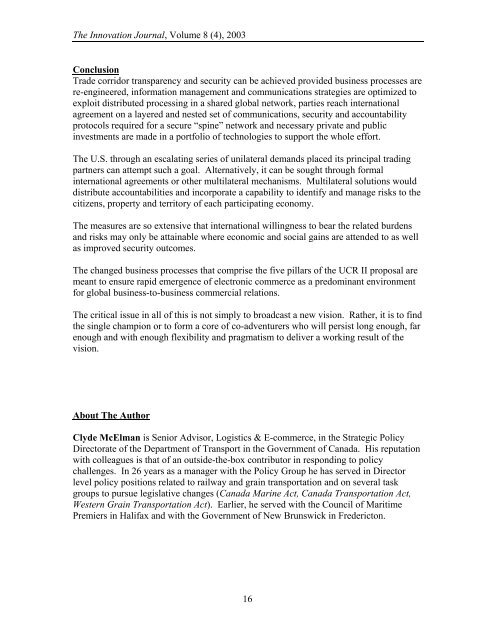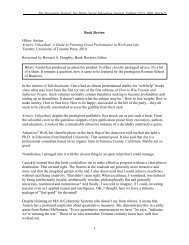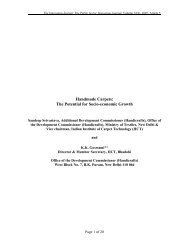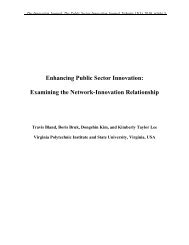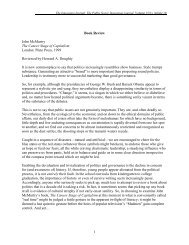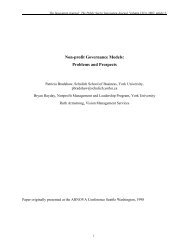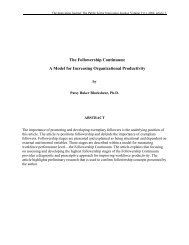Trade Corridor Transparency and Security - The Innovation Journal
Trade Corridor Transparency and Security - The Innovation Journal
Trade Corridor Transparency and Security - The Innovation Journal
You also want an ePaper? Increase the reach of your titles
YUMPU automatically turns print PDFs into web optimized ePapers that Google loves.
<strong>The</strong> <strong>Innovation</strong> <strong>Journal</strong>, Volume 8 (4), 2003<br />
Conclusion<br />
<strong>Trade</strong> corridor transparency <strong>and</strong> security can be achieved provided business processes are<br />
re-engineered, information management <strong>and</strong> communications strategies are optimized to<br />
exploit distributed processing in a shared global network, parties reach international<br />
agreement on a layered <strong>and</strong> nested set of communications, security <strong>and</strong> accountability<br />
protocols required for a secure “spine” network <strong>and</strong> necessary private <strong>and</strong> public<br />
investments are made in a portfolio of technologies to support the whole effort.<br />
<strong>The</strong> U.S. through an escalating series of unilateral dem<strong>and</strong>s placed its principal trading<br />
partners can attempt such a goal. Alternatively, it can be sought through formal<br />
international agreements or other multilateral mechanisms. Multilateral solutions would<br />
distribute accountabilities <strong>and</strong> incorporate a capability to identify <strong>and</strong> manage risks to the<br />
citizens, property <strong>and</strong> territory of each participating economy.<br />
<strong>The</strong> measures are so extensive that international willingness to bear the related burdens<br />
<strong>and</strong> risks may only be attainable where economic <strong>and</strong> social gains are attended to as well<br />
as improved security outcomes.<br />
<strong>The</strong> changed business processes that comprise the five pillars of the UCR II proposal are<br />
meant to ensure rapid emergence of electronic commerce as a predominant environment<br />
for global business-to-business commercial relations.<br />
<strong>The</strong> critical issue in all of this is not simply to broadcast a new vision. Rather, it is to find<br />
the single champion or to form a core of co-adventurers who will persist long enough, far<br />
enough <strong>and</strong> with enough flexibility <strong>and</strong> pragmatism to deliver a working result of the<br />
vision.<br />
About <strong>The</strong> Author<br />
Clyde McElman is Senior Advisor, Logistics & E-commerce, in the Strategic Policy<br />
Directorate of the Department of Transport in the Government of Canada. His reputation<br />
with colleagues is that of an outside-the-box contributor in responding to policy<br />
challenges. In 26 years as a manager with the Policy Group he has served in Director<br />
level policy positions related to railway <strong>and</strong> grain transportation <strong>and</strong> on several task<br />
groups to pursue legislative changes (Canada Marine Act, Canada Transportation Act,<br />
Western Grain Transportation Act). Earlier, he served with the Council of Maritime<br />
Premiers in Halifax <strong>and</strong> with the Government of New Brunswick in Fredericton.<br />
16


